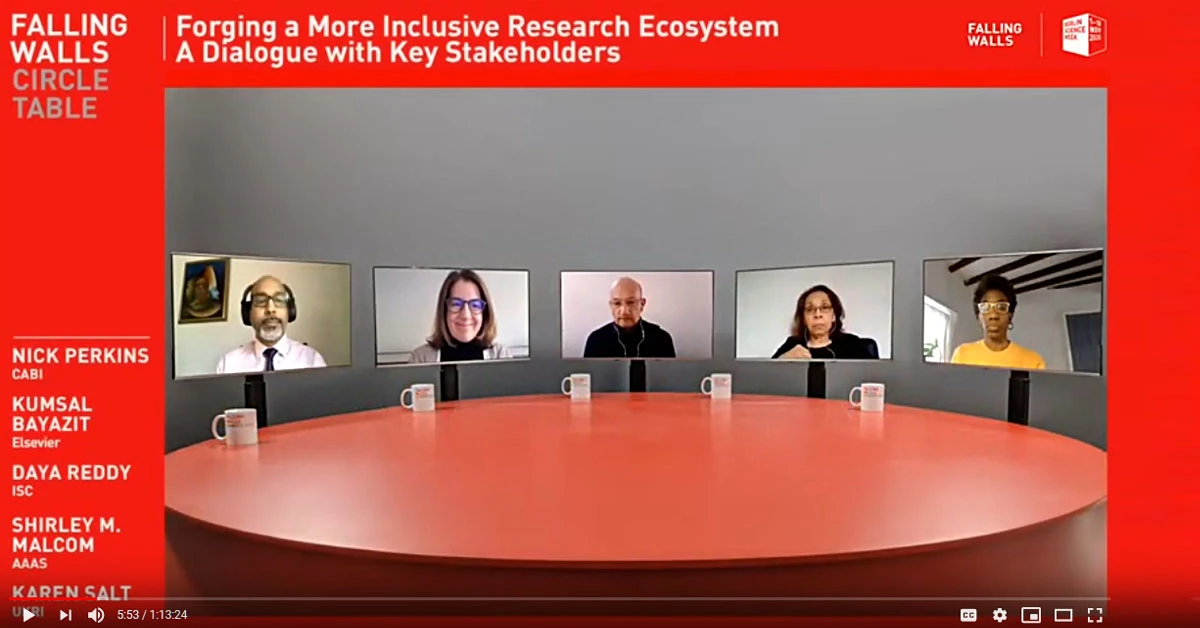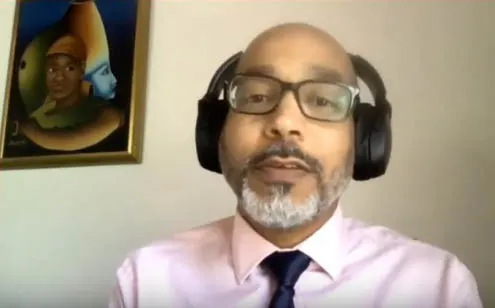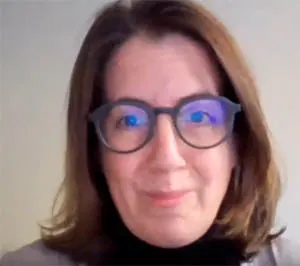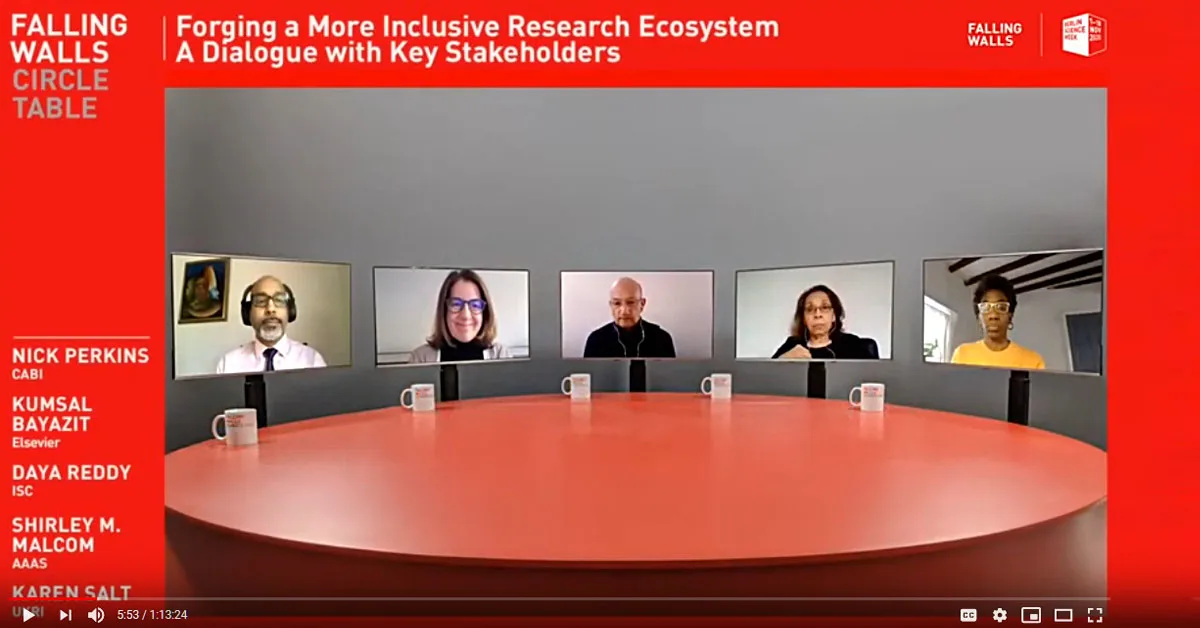7 challenges to overcome for a more inclusive research ecosystem
1 December 2020
By Alison Bert, DMA

At Falling Walls, key players in the science community talk about how we can advance research inclusivity — and why it’s so crucial
Caption: The Falling Walls Circle Table “Forging a More Inclusive Research Ecosystem with Key Stakeholders” (left to right) featured Nick Perkins, Lead Technical Advisor at CABI (moderator); Elsevier CEO Kumsal Bayazit; Prof Daya Reddy, President of the International Science Council; Dr Shirley Malcom, Director of Sea Change and Senior Advisor at AAAS; and Dr Karen Salt, Deputy Director at UKRI.
Every year, leading scientists, science strategists and policymakers from around the world come together at the Falling Walls opens in new tab/window conference in Berlin. As the summit commemorates the anniversary of the fall of the Berlin Wall, discussions center around a crucial question: “Which are the next walls to fall in science and society?”
For panelists in the Falling Walls Circle Table on November 6, the barrier they hope to bring down is that of racial inequity in research.
As moderator Nick Ishmael-Perkins, Lead Technical Advisor for Development, Communication & Extension at CABI opens in new tab/window, explained:
The Falling Walls Circle Tables convene the world’s brightest minds … from academia, business and politics to discuss how we can apply science research and innovation to get the world moving again. In this session, we’re going to focus on the vexing issue of inclusion and diversity.
“Vexing” turned out to me an apt term for the challenges these panelists have encountered in their work. Having led a wide range initiatives to support inclusivity in science, they all agreed that supporting inclusivity in its many forms can be a complex and illusive goal.
Each panelist talked about their biggest challenges and how we could work together to find solutions.

Nick Ishmael-Perkins
1. “We have changed the conversation about women; we have not changed the conversation about race.”
Dr Shirley Malcom opens in new tab/window, Director of Sea Change and Senior Advisor for the American Association for the Advancement of Science (AAAS) opens in new tab/window, pointed out that the scientific community has made much progress with gender equality, but she questioned whether all those lessons could be transferred to issues of race.
When it comes to measuring progress, she said, the number of women in science is only part of the equation:
Increasing the numbers is necessary, but it's not sufficient. Because quite frankly, even though we have more women than ever, for example, in the medical fields, they have not progressed to the levels of department chairs or division chiefs or deans, etc.
Importantly, she added, women of color are also being excluded:
We must be very attentive to issues of women of color because in too many cases, gender diversity, gender equality, has meant white women’s equality, not women of color. And I think that the particular intersection and the intersectionality issues have really not been addressed.
She questioned whether the same approach that is working for gender equality could work for racial equality:
I'm not really sure that the rules that apply to gender apply to race because the men who are in charge essentially may have wives, sisters, mothers who look like them — but race is different. Race has carried with it, for a very long time, this assumption of deficiency, and therefore, the message from society about the place of race and racism within the larger society hasn't really changed the conversation.
We have changed the conversation about women; we have not changed the conversation about race.

Shirley Malcom, PhD
2. We need more data for race: “What you can’t measure, you can’t progress.”
Elsevier CEO Kumsal Bayazit agreed with Dr Malcom. “We have to do a lot more and harder work to actually achieve our objectives around race,” she said:
As a data and analytics company, we’re working on measurement and data-led insights, which are key to both transparency and progress. We've made good progress with gender data and are now focusing on race and ethnicity – which is a challenging data gathering exercise, but what you can't measure you can't progress.
As an example, she mentioned Elsevier’s ongoing efforts to diversify its editorial boards and make sure journal publishing is inclusive.
On our editorial boards, we can look at nationality, so that enables us to make sure there's Global South representation and Global North representation. We can look at the time from the first paper that was published as a proxy of experience to make sure early-career researchers can publish as well as experienced researchers. We can look at gender. But we don't have the data for race, and that's what we're working on right now.
She said their working group has encountered various challenges:
We have authors that come from everywhere on the globe, and it’s very difficult to navigate your way through the legal and compliance issues. We’re trying to see if we can voluntarily get the data, but that means we have to make sure everybody feels very comfortable because this is a very personal choice.
I do think the data helps; it shows the discrepancies. I've seen the funding data for women researchers; they tend to have smaller grants, and they tend to get less. I haven't seen that by race. I'm sure data exists someplace. But the data matters; it really helps people understand the issue and focus on how to move the needle. … And it’s how we can tell whether interventions are working.

Kumsal Bayazit
3. Scientific communities in the Global South are marginalized.
Prof Daya Reddy opens in new tab/window, South African Research Chair in Computational Mechanics at the University of Cape Town opens in new tab/window, founding member of the African Institute of Mathematical Sciences opens in new tab/window and President of the International Science Council opens in new tab/window, focused on how inequality and exclusivity affects researchers in the Global South:
The reality is that scientific communities, especially in the Global South, are highly marginalized. There are huge disparities in access to knowledge, in the degree to which participation can take place, lack of real capacity in many parts of the world, discrimination on grounds of gender, race and other forms as well, weak science systems, complete marginalization from all the bits and pieces of the science ecosystem.
He then addressed the issue of collaboration:
Where collaboration takes place, very often it is lopsided; the Global South partner’s role is one, to a large extent, of providing the access to the field studies, the data and the like, rather than being a true partner in the collaboration. And we know all about the brain drain, of course.
So there are a number of, if you like, ethical and moral reasons why we need to address all of this. But in addition, all of these factors serve to undermine what science is really all about and to weaken the science system as a whole.
There are also practical reasons to engage researchers in the Global South, he said: without their full participation, we will not be able to achieve the UN SDGs opens in new tab/window:
Science and technology is recognized as a major lever to accelerate transformations towards achieving the Sustainable Development Goals. Science and technology, however, can only be successful if it is thoroughly integrated in all respects. We can only succeed in achieving the SDGs if we work together globally; there has to be participation across disciplines — transdisciplinary activity involving not only scientists but other communities as well ... Full participation from the Global South: young researchers, for example, real connectedness and real cooperation.
In order to achieve those kinds of goals, and for science and technology to be the lever it is intended to be, we have to address all forms of discrimination and practices that are exclusionary and that serve to undermine those sorts of efforts. So that would be a further reason why we need to treat this issue with the degree of urgency which, unfortunately, we have not done in the past. So there’s been a wake-up call, and a concerted effort now that is underway.

Prof Daya Reddy, PhD
4. We need to understand what is actually in our ecosystem.
Deputy Director of Research Culture and Environment for UK Research & Innovation (UKRI) opens in new tab/window, the UK’s national funding agency, Dr Karen Salt opens in new tab/window talked about the extensive system required for research and innovation – the breadth of which many people overlook.
I’m really emphasizing system here mainly because in many people’s mindsets, when they think about research or innovation, they think of a lone, singular person doing research. Or they think of an innovator creating some sort of innovation, and then we have some product or we have knowledge that’s at the end.
UKRI acknowledges that what we actually have is a whole massive system where we've got archivists, and we've got lab technicians, and we've got cleaners, we've got security guards, we've got caterers — we've got a whole set of people, from data specialists to others, who help make this system work. And we've not done a very good job across UKRI, within the UK or I think globally in acknowledging that our system already has a massive, inclusive wide reach of people who actually play a significant role throughout that whole process.
And there's something quite critically important that, when we start to think about creating and forging a more inclusive research ecosystem, we need to be thinking about what is actually in that ecosystem. That’s a fundamentally important place to start: there are already some amazing things there within that system, and we’re not actually recognizing and honoring the wealth of potential. …
We also have to do quite a lot to retain the people who are in our system. We’ve got an amazing set of researchers and innovators across the globe, and we need to do much more work to actually make sure that they realize that research and innovation is a space for them. And we also need to do quite a bit of work to make sure we invest, and we invest across the piece: we invest in innovative projects and ideas, but we also think about the infrastructure — we also think about what we need to put into the system to essentially allow a variety of individuals to flourish.
5. “Unless we identify the systemic issues and fix them, we can’t make real progress.”
Bayazit identified three impediments to building a more inclusive research system, all of which require delving below the surface.
First, this is an emotionally raw issue: it's about justice, equal rights, power structures, fairness, history, belonging. It makes us question our own biases, conscious or unconscious. We need many uncomfortable and respectful conversations to change the culture and evolve our mindset, and even when there’s positive intent, mistakes can be made in actions and words. I know I get it wrong from time to time. So it’s important to have the courage to keep trying and the empathy and compassion to support culture change.
Another impediment is that when you focus on one dimension of diversity, be it race or gender, that can be perceived as deprioritizing other dimensions of diversity. I always start with inclusion, and that leads to diversity. Inclusive cultures are ones where people feel a sense of belonging, regardless of who they are, the color of their skin, their gender, their religion, age, sexual orientation, ability. And when it comes to diversity, we must advance it on all fronts because progress for one will lift all, creating a more inclusive mindset.
And the third impediment is the structural barriers and system bias. You don’t always know where the biases lie in the system, but we know they exist, and we need to solve for this. Why is it that Black citizens account for 13 percent of the US population but only 6 percent of all Elsevier employees in the same country? Our people policies offer equal opportunities for all, so why doesn’t our workforce reflect the makeup of the overall population? Why is it that only 7 percent of university students in science and engineering and less than 5 percent of microbiology PhDs are Black in the US?
We can and we should lift individuals, but unless we identify the systemic issues and fix them, we can’t make real progress.
6. “We need to make it clear to people that we’re not going to move forward unless we move forward together.”
As Director of Sea Change opens in new tab/window at AAAS, Dr Malcom works with people throughout the research ecosystem to help them make meaningful changes within their organizations. Sometimes not everyone is on board with those changes. She said convincing the detractors comes down to the question of leadership:
What kind of leadership needs to be provided in order to help people begin to understand that science is not going to progress unless we are diverse and inclusive? We somehow need to make it clear to people that we’re not going to move forward unless we move forward together and we become more open and inclusive.
I think that is the challenge that we all are going to have.
At AAAS, Dr Malcom and her colleagues are taking a multifaceted approached to race:
The targets for anti-racism must be the places where research is done, where people are educated, where science as an enterprise is advanced and supported and where scientists are enabled — within their disciplines, their professional societies, in publications and awards and recognitions.
7. How do we do this work transparently?
In closing, Dr. Salt posed a question to the other panelists:
How do we do the really hard, difficult work and really delve into this and do it as openly and as transparently as possible? I just want to note that in certain environments and places, this is actually quite hard because of whatever might be the political environment or the infrastructures that our various institutions are in – they can’t be necessarily as open as they might want to be. And in other instances, they should be more transparent than they are.
So I think there's a real key question for us: How do we give each other the space, the safety and the challenge to do this work as openly as we can?
Watch the panel
Falling Walls Circle Table: Forging a More Inclusive Research Ecosystem with Key Stakeholders featured Nick Ishmael-Perkins, Lead Technical Advisor at CABI (moderator); Elsevier CEO Kumsal Bayazit; Prof Daya Reddy, President of the International Science Council; Dr Shirley Malcom, Director of Sea Change and Senior Advisor at AAAS; and Dr Karen Salt, Deputy Director at UKRI.
FALLING WALLS CIRCLE TABLE_ FORGING A MORE INCLUSIVE RESEARCH ECOSYSTEM WITH KEY STAKEHOLDERS

Watch now
|
FALLING WALLS CIRCLE TABLE_ FORGING A MORE INCLUSIVE RESEARCH ECOSYSTEM WITH KEY STAKEHOLDERS
Contributor

ABD